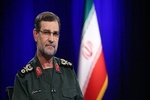In addition to the mentioned 18,000 tons of gasoline, which is to be exported, some 10,000 tons of diesel fuel and 3,000 tons of Kerosene will also be offered on the same day.
The first cargo of gasoline was offered at IRENEX on July 30 for Afghan buyers in the initial phase. Chief Executive of PGSR Mohammad Ali Dadvar on Saturday said that the cargo, as the first Iranian exports cargo to neighboring countries through IRENEX, was exported overseas.
As reported, two methods namely payment via Central Securities Depository of Iran and direct payment to the seller outside of the capital market clearing house have been provided for the buyers.
Payment can be cleared either in rials or in foreign currency.
Buyers should first receive trading codes to be eligible to trade in IRENEX. They can also place orders via authorized brokerage companies.
For the time being, purchasing the offered gasoline is solely limited to companies (legal entities) and it is bound to be done under contracts with NIOC and Iranian and foreign companies are required to provide evidence and legal documents to prove their legitimacy.
Since the US withdrew from Iran’s nuclear pact in May 2018, vowing to drive Iran's oil exports down to zero, the Islamic Republic has been taking various measures to counter US actions and to lessen its economy’s reliance on oil.
In this regard, one of the main strategies of the National Iranian Oil Company in recent years has been focusing on the country’s refineries.
Earlier this month, the Oil Minister Bijan Namdar Zanganeh announced that the country’s daily gasoline production exceeded 110 million liters to mark a new record in the country’s gasoline production history.
The NIOPDC reports indicates that the country’s daily gasoline production has witnessed a 5 million barrels increase in the past six months.
The increased in the gasoline output has been mostly due to the inauguration of the third phase of PGSR.
HJ/IRN83424209























Your Comment